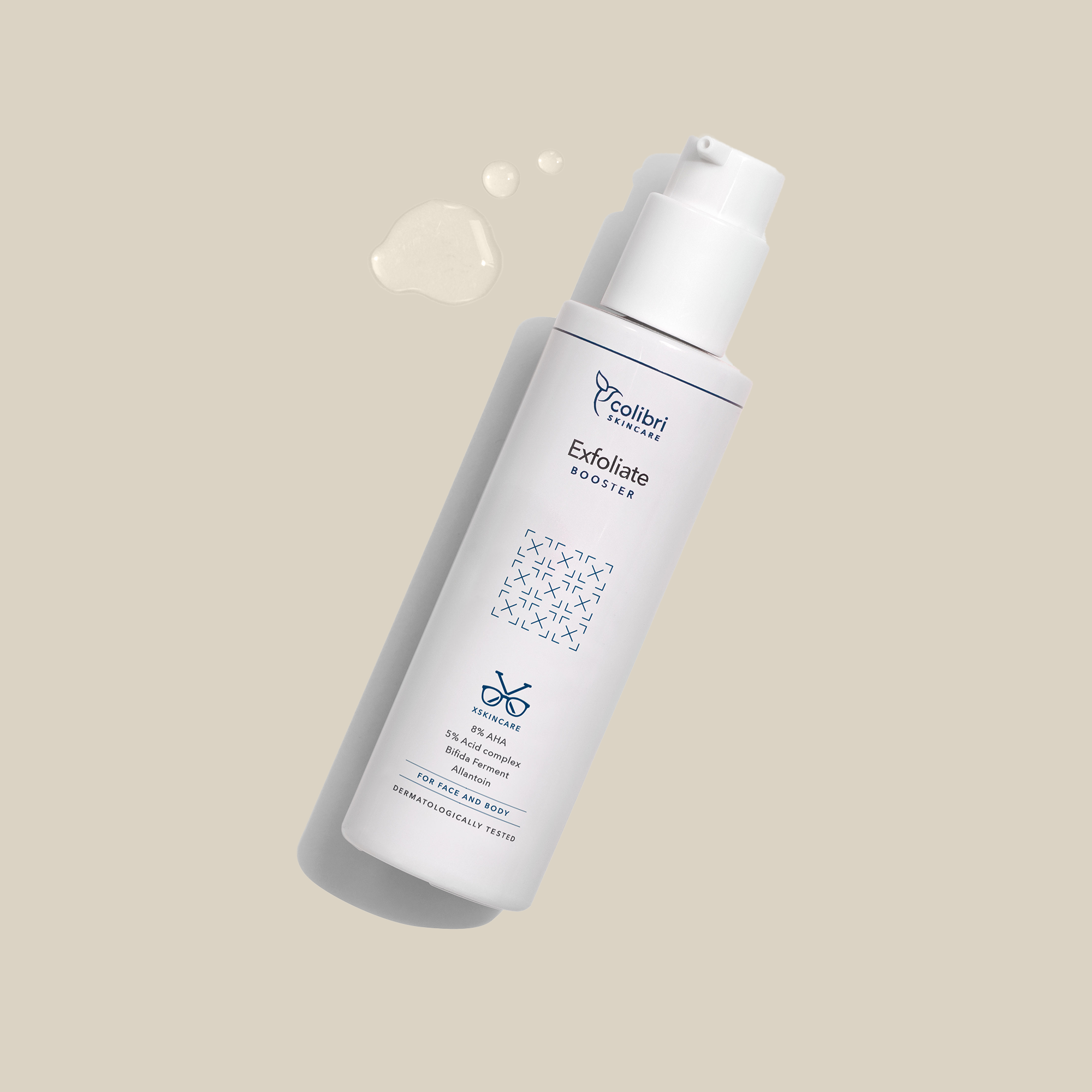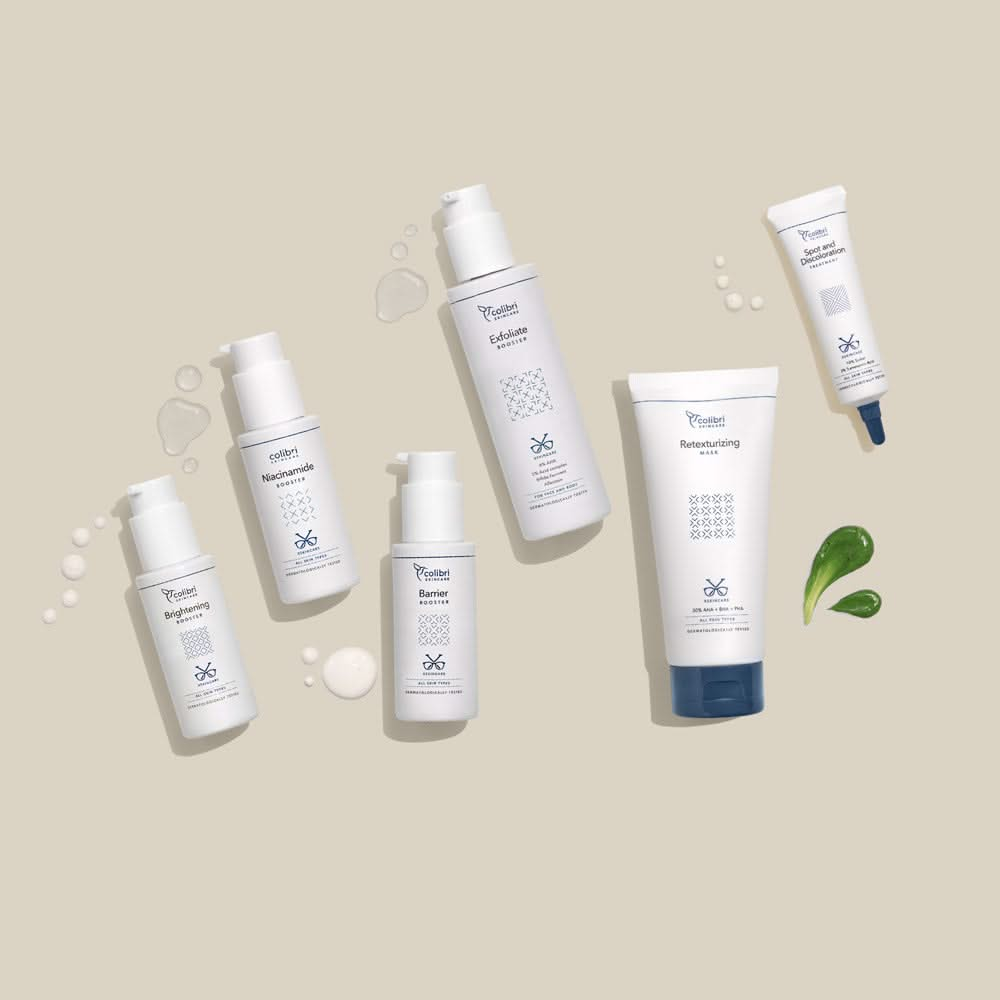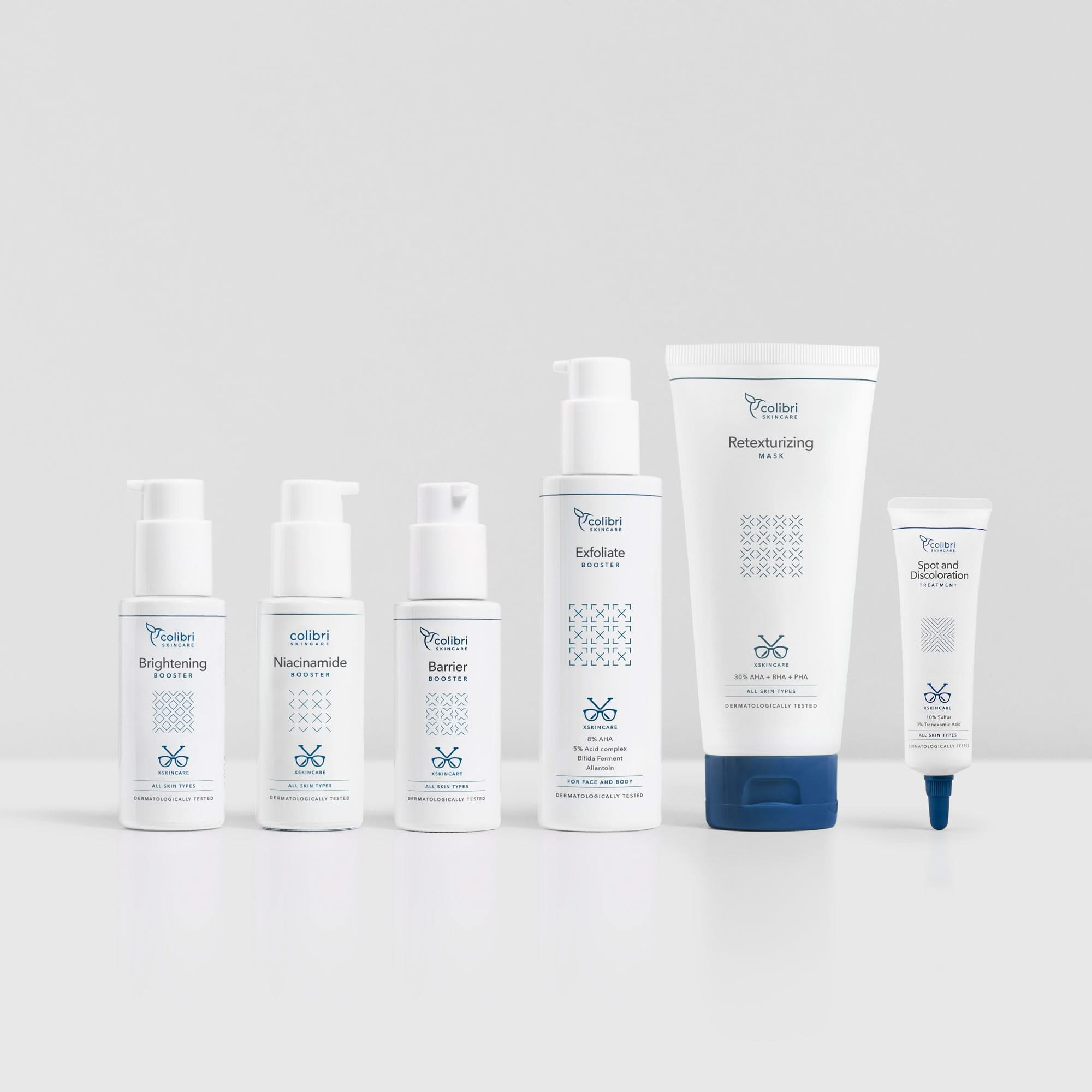What Are the Benefits of Combining AHAs and BHA?
The combination of AHAs (alpha hydroxy acids) and BHA (beta hydroxy acid, also known as salicylic acid) is one of the most effective strategies for achieving visibly smoother, clearer skin. While AHAs such as lactic acid or glycolic acid gently remove dead skin cells from the surface and stimulate cell renewal, salicylic acid as a BHA works deep within the pores. There, it dissolves excess sebum and buildup, reduces inflammation, and effectively helps combat blackheads, breakouts, and oily skin. This powerful ingredient duo is particularly well-suited for enlarged pores, congested or blemish-prone skin, dull or uneven tone, and the first signs of skin aging. The exfoliating action on the surface is ideally complemented by the deep-cleansing effect inside the pores—resulting in a clearer, smoother complexion with a healthy glow.
How to Properly Incorporate Chemical Peels into Your Skincare Routine
Unlike mechanical scrubs, fruit acids like lactic acid or glycolic acid (AHAs) and salicylic acid (BHA) work gently and evenly—without irritating the skin barrier. To fully benefit from their exfoliating properties, proper application order is key. After cleansing, apply your chemical exfoliant directly to dry skin. Then, replenish hydration with a hyaluronic acid-based serum and follow up with a nourishing moisturizer. During the day, broad-spectrum sun protection with SPF 30 or higher is essential, as the skin becomes more sensitive to UV radiation after using AHA or BHA products.
Chemical Peels or Mechanical Scrubs?
A chemical peel is a powerful yet gentle step in your skincare routine and offers many advantages over traditional mechanical scrubs. While mechanical exfoliants use abrasive particles to physically remove dead skin cells, chemical peels rely on active acids such as AHAs (e.g., lactic or glycolic acid) and BHA (salicylic acid) to stimulate cell turnover—without damaging the skin barrier. Chemical exfoliants work more evenly, are better controlled, and gentler on the skin. They effectively dissolve dead skin cells, refine the texture of the skin, and promote natural regeneration. At the same time, they significantly improve the skin’s ability to absorb follow-up care such as serums and moisturizers.





